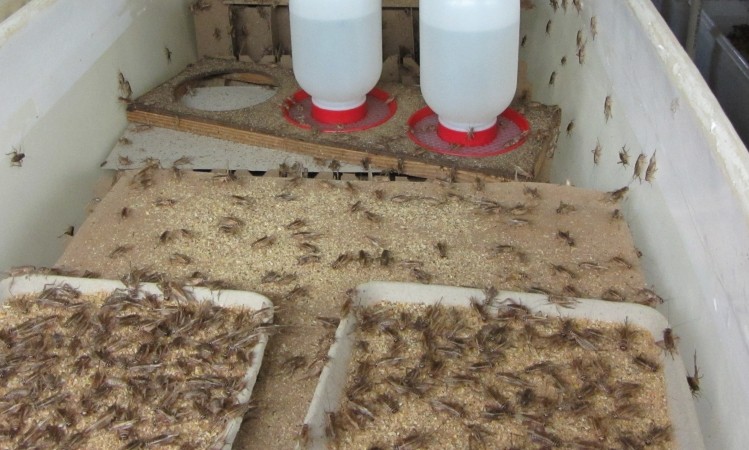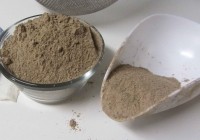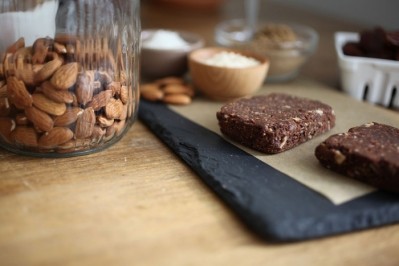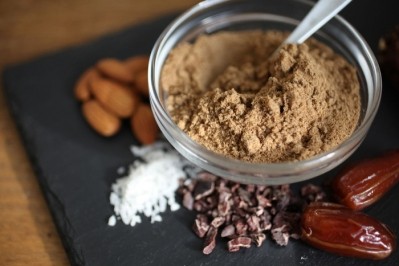Process tweak yields a superior cricket protein, developer says

As with other nutraceutical ingredients, krill for instance, part of the market development history for a novel source is the discovery of new ways of harvesting raw material and/or processing or extracting the ingredients. Over time, the most efficient ways win out and some earlier methods fall by the wayside. The production of protein ingredients from crickets and other insects is still at this very early stage.
Dossey’s company, All Things Bugs LLC, based in Athens, GA, is at this moment mostly an intellectual property entity. Dossey’s improved process is still shrouded to some degree in the cloak of proprietary information as he goes through the patent applciation process. But, in a nutshell (exoskeleton?), Dossey’s innovation is to grind the frozen insects first, before drying and heat treating to kill any microbes. Other producers take a different approach.
“Other producers roast the whole crickets first. It takes a lot of heat to roast the whole insect and dehydrate it, because their bodies are made to withstand heat and conserve moisture,” he said. “When I looked at the roasting times, I thought, this can’t be the way. With that much heat over that period of time you are getting a lot of nutrient degradation.”
Oversupply of PhDs part of the motivation
Dossey, who holds a PhD biochemistry and molecular biology from the University of Florida, came to insect protein game through a long personal interest in entomology. That, and the harsh realization that the US educational system has lately been churning out far more PhDs in various disciplines than the academic jobs available, with 100 or more qualified applicants for each faculty opening a not unheard-of ratio.
“I was stuggling to find a faculty job. I met some people interested in this field when i was a post doc with the USDA. And I thought, I could hurry up and get one of those 50 faculty jobs I’d applied for or I could start a company,” Dossey said.
Dossey chose to work with crickets first because they were readily available and relatively cheap, he said. (He has tested his process on other insect sources.) The insects are raised on one of several farms in the South that cater to the pet trade, and Dossey did some of his preliminary formulation work at the University of Nebraska Lincoln's Food Processing Center. While the bugs meant for human consumption are raised separately, the process hardly differs from the raising of crickets meant to feed lizards, Dossey said. A big advantage of crickets as an animal protein source is that, contrary to some people’s prejudices born of innate revulsion, crickets are actually a very clean animal, he said. It’s a big contrast to what you’d see in any livestock barn or poultry house.
“Their bodies aren’t in contact much with the ground. And their droppings are dry and don’t adhere, and tend to fall through the mesh in the bottom of the cage. We’ve never found salmonella or listeria in any of our plate counts with the incoming insects. Of course, there’s yeast and mold, but that’s everywhere on everything. In fact, most of the microbes we do find probably come from inside their bodies in their digestive tract as we use the whole insect,” Dossey said.
Protein bar application
Dossey’s company has already had significant orders for his ingredient for use in protein bars, which is produced by a contract manufacturer in the Northeast. The process yields a fluffier powder than competing products, he said, and the lower temperature used means the flavor is lighter, too.
“The aroma is more mild, the texture is finer and the color is lighter,” Dossey said.
The protein portion of the ingredient—which Dossey and other proponents say is highly competitive with other animal protein sources in terms of its quality—comes mostly from the animals’ muscle tissue. But the exoskeltons contribute a polysaccharide fraction that is similar to chitosan, for which various nutraceutical functions are claimed, including acting as a dietray fiber and/or blocking fat absorption. It’s too early to say what, if any, functions this polysaccharide portion in the cricket protein powder might have. Dossey said that’s a matter for further study.
Grants for famine relief
Dossey built the intellectual property that underpins his company via a series of grants—including from the Bill and Melinda Gates Foundation and the USDA—that have included looking at insect protein as the basis of a RUTF, or a ready to use therapeutic food, a food product category that is shelf stable, highly nutrient dense and easily transported for use in international famine relief efforts.
“My first two grant proposals were to develop insect powder for these kinds of products particularly,” Dossey said. “Most of the existing products are peanut butter-based. The United Nations is very interested in the potential of insect proteins.”
Room for improvement
Dossey said he sees huge potential for insect proteins in the marketplace. The ingredient made with his process has a lot of formulation flexibility, he said, and there is a lot of room for improvement on the raw material side.
“The process of raising the insects is very simple and there has been almost no technological development. The cost is a little high right now because of the (low) demand, but higher scale would bring that down,” he said.
There is also room for development of the ingredient production process. Dossey said he has developed several ways to separate the animals’ muscle tissue from their exoskeletons, potentially boosting the protein fraction in the finished powder over where it stands now, which is about 63%.

















